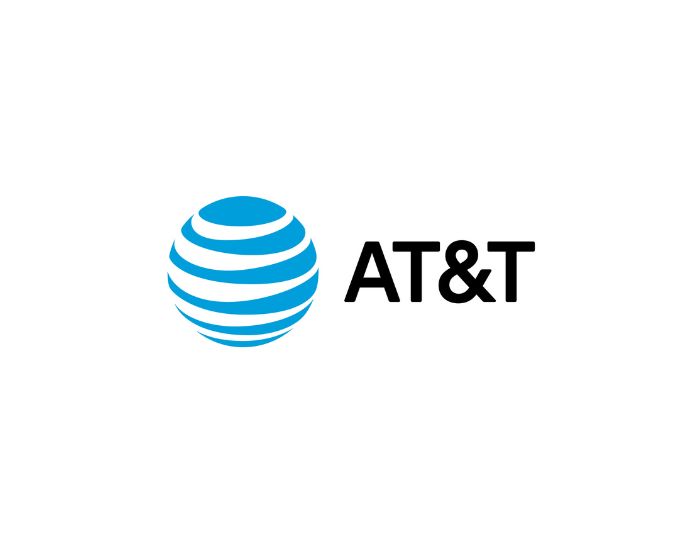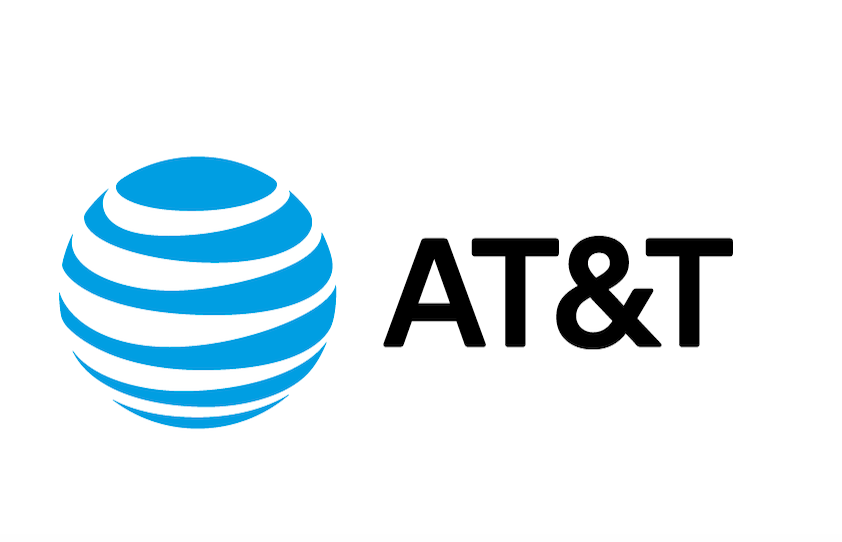Telecommunications Sector Analysis: Verizon, AT&T, Comcast

Telecommunications Sector: A Deep Dive into Verizon, AT&T, and Comcast
In the rapidly evolving telecommunications sector, companies like Verizon (NYSE:VZ), AT&T (NYSE:T), and Comcast (NASDAQ:CMCSA) are drawing attention due to their strategic positioning amidst rising broadband costs. These firms are not only adapting to inflationary pressures by adjusting their pricing but are also capitalizing on the burgeoning demand for high-speed internet. This demand is fueled by the global shift towards remote work, the popularity of online entertainment, and the expansion of e-commerce. Each of these companies brings a unique value proposition to the table, from Verizon's focus on wireless service revenue growth to AT&T's ambitious plans for 5G and fiber network expansion, and Comcast's impressive net income and revenue increases.
Verizon stands out for its commitment to dividend returns and growth in wireless service revenue. Despite a slight dip in total operating revenue, the company's wireless segment has shown resilience and growth, which is a positive sign for investors looking for stable returns. The anticipated growth in wireless service revenue and adjusted EBITDA, coupled with a robust dividend yield, positions Verizon as a potentially lucrative investment. The company's recovery from past controversies and its forward-looking financial projections underscore its ability to navigate challenges and capitalize on opportunities in the telecommunications sector.
AT&T's financial metrics reveal a mixed picture, with a high dividend yield and a strategic focus on expanding its 5G and fiber networks. However, a closer look at its financial health, as indicated by ratios such as the current ratio, quick ratio, and debt to equity ratio, suggests potential liquidity and leverage challenges. The company's significant level of debt, as reflected in the debt to equity and net debt to EBITDA ratios, points to a reliance on borrowing to finance its operations. Despite these challenges, AT&T's substantial asset base and liquidity, as evidenced by its cash and cash equivalents, provide it with a foundation to pursue growth initiatives and potentially improve its financial standing over time.
Comcast's appeal lies in its dividend growth and the solid performance of its stock, which has seen capital gains alongside a moderate dividend yield. The company's significant increase in net income and revenue, particularly in the fourth quarter, highlights its operational efficiency and ability to generate profit. This financial strength, combined with a focus on dividend growth, makes Comcast an attractive option for investors seeking long-term value and stability in the telecommunications sector.
The financial health and strategic initiatives of Verizon, AT&T, and Comcast reflect their potential to thrive in the face of rising broadband costs and the increasing demand for high-speed internet. While each company faces its own set of challenges, their large size, ability to generate recurring revenue, and strategic focus on key growth areas position them as compelling investment opportunities in the telecommunications industry. Investors considering these stocks should weigh the companies' financial metrics, dividend yields, and growth strategies to make informed decisions aligned with their investment goals.
| Symbol | Price | %chg |
|---|---|---|
| TLKM.JK | 3490 | 4.01 |
| DNET.JK | 9000 | 0 |
| AMX.BA | 34660 | 0 |
| ISAT.JK | 1905 | -1.05 |

AT&T (NYSE:T) Launches Connectopia, Enhancing Fan Experience with Innovative Technology
- AT&T has launched Connectopia at the Intuit Dome, leveraging its Fiber and 5G technology to offer an immersive, AI-driven experience for Los Angeles Clippers fans.
- The initiative is supported by AT&T's fast and reliable fiber and 5G capabilities, aiming to transform the game-day experience into a participatory space for fans.
- Financially, AT&T has been reiterated a "Buy" rating by UBS with a price target of $31, indicating a potential upside of approximately 25.58%.
AT&T (NYSE:T) is a major player in the telecommunications industry, known for its extensive network services, including wireless, broadband, and fiber. The company has recently launched Connectopia at the Intuit Dome, in partnership with the Los Angeles Clippers. This innovative experience leverages AT&T's Fiber and 5G technology to offer fans an immersive, AI-driven world-building platform.
Connectopia allows fans to engage with the game in a unique way by creating personalized digital districts. These are displayed on a massive 30-foot parabolic wraparound screen, enhancing the game-day experience. The initiative is supported by AT&T's fast and reliable fiber and 5G capabilities, as highlighted by Melissa Arnoldi, executive vice president and general manager of AT&T Business.
The launch of Connectopia aligns with AT&T's commitment to innovation and enhancing connectivity. This is further emphasized by Gillian Zucker, CEO of Halo Sports and Entertainment, who noted that Connectopia transforms the Intuit Dome into a participatory space for fans. The installation features real-time, cinematic 8K AI videos, combining AI image generation, computer vision, and procedural 3D animation.
On the financial front, UBS has reiterated its "Buy" rating for AT&T, with a price target of $31, as reported by StreetInsider. At the time of this announcement, the stock was priced at $24.68, indicating a potential upside of approximately 25.58%. This reflects confidence in AT&T's market position and growth prospects.
AT&T's financial metrics provide further insight into its valuation. The company has a price-to-earnings (P/E) ratio of approximately 14.21, a price-to-sales ratio of about 1.45, and an enterprise value to sales ratio of around 2.56. These figures suggest a balanced market valuation. Additionally, the debt-to-equity ratio of approximately 1.25 indicates a moderate level of leverage, while the current ratio of around 1.01 suggests the company's ability to cover short-term liabilities.

AT&T Inc. (NYSE:T) Price Target and Financial Performance Overview
- Gregory Williams from Williams Trading set a price target of $33 for AT&T Inc. (NYSE:T), indicating a potential increase of 29.16% from its current price.
- The company's recent fiscal third-quarter earnings met analysts' expectations, leading to revised forecasts.
- AT&T's stock has experienced a decrease of 1.96%, with a current price of $25.05, reflecting market volatility and investor interest.
AT&T Inc. (NYSE:T) is a major player in the telecommunications industry, providing services such as wireless communications, broadband, and digital entertainment. The company competes with other giants like Verizon and T-Mobile. Recently, Gregory Williams from Williams Trading set a price target of $33 for AT&T, suggesting a potential increase of 29.16% from its current price of $25.55.
AT&T's recent fiscal third-quarter earnings met analysts' expectations, which has led to revised forecasts for the company. Despite this, the stock price has decreased by 1.96%, now standing at $25.05. This drop reflects a $0.50 change, with the stock fluctuating between $24.96 and $25.68 today.
The company's market capitalization is approximately $179.1 billion, indicating its significant presence in the market. Over the past year, AT&T's stock has seen a high of $29.79 and a low of $21.38. This range highlights the volatility and potential for growth within the stock.
Today's trading volume for AT&T is 8,479,079 shares, showing active investor interest. The recent earnings report and subsequent forecast adjustments have drawn attention to AT&T's financial performance and future outlook, as highlighted by Benzinga. Investors are closely watching how these factors will influence the stock's trajectory.

AT&T Exceeds Earnings Expectations Amid Subscriber Growth, Stock Gains 5%
AT&T Inc. (NYSE:T) shares rose more than 5% intra-day today after the company delivered stronger-than-expected fourth-quarter results, fueled by a robust increase in monthly bill-paying wireless subscribers, underscoring sustained demand for its premium unlimited plans. The telecom giant reported 482,000 net monthly paying wireless phone subscribers, surpassing the Street projection of 441,511.
AT&T reaffirmed its long-term growth strategy outlined during its investor day last year. The Dallas-based telecom leader aims to double its fiber internet availability and expand its 5G network footprint. By leveraging bundled discounts on fiber internet and wireless services, AT&T seeks to further enhance its customer base and market position.
For fiscal year 2025, the company projects adjusted core income growth of at least 3%. Excluding its interest in DirecTV, which is being sold to TPG Capital for $7.6 billion, AT&T anticipates generating more than $16 billion in free cash flow during the year. The firm plans to initiate share buybacks in the second half of 2025 as part of its broader capital return program, which aims to deliver over $40 billion to shareholders through dividends and repurchases over the next three years.
In the fourth quarter, adjusted earnings per share reached $0.54, exceeding analysts’ expectations of $0.50. Revenue rose 0.9% year-over-year to $32.3 billion, buoyed by stronger-than-expected performance in its mobility unit. This result also topped Wall Street’s estimate of $32.03 billion.

AT&T Exceeds Earnings Expectations Amid Subscriber Growth, Stock Gains 5%
AT&T Inc. (NYSE:T) shares rose more than 5% intra-day today after the company delivered stronger-than-expected fourth-quarter results, fueled by a robust increase in monthly bill-paying wireless subscribers, underscoring sustained demand for its premium unlimited plans. The telecom giant reported 482,000 net monthly paying wireless phone subscribers, surpassing the Street projection of 441,511.
AT&T reaffirmed its long-term growth strategy outlined during its investor day last year. The Dallas-based telecom leader aims to double its fiber internet availability and expand its 5G network footprint. By leveraging bundled discounts on fiber internet and wireless services, AT&T seeks to further enhance its customer base and market position.
For fiscal year 2025, the company projects adjusted core income growth of at least 3%. Excluding its interest in DirecTV, which is being sold to TPG Capital for $7.6 billion, AT&T anticipates generating more than $16 billion in free cash flow during the year. The firm plans to initiate share buybacks in the second half of 2025 as part of its broader capital return program, which aims to deliver over $40 billion to shareholders through dividends and repurchases over the next three years.
In the fourth quarter, adjusted earnings per share reached $0.54, exceeding analysts’ expectations of $0.50. Revenue rose 0.9% year-over-year to $32.3 billion, buoyed by stronger-than-expected performance in its mobility unit. This result also topped Wall Street’s estimate of $32.03 billion.

AT&T Inc. (NYSE:T) - A Solid Investment Opportunity Amid Recent Dips
- Recent performance indicates a slight decline in AT&T's stock, suggesting a potential rebound opportunity.
- Projected stock price increase of 4.59% signals the stock might be undervalued, offering room for upward correction.
- Piotroski Score of 8 highlights AT&T's robust financial health and stability, underscoring its growth potential.
AT&T Inc. (NYSE:T) is a major player in the telecommunications industry, providing a wide range of services including wireless communications, broadband, and digital entertainment. The company competes with other giants like Verizon and T-Mobile in the U.S. market. Despite facing challenges, AT&T remains a significant force in the industry due to its extensive network and customer base.
In recent performance, AT&T's stock has seen a slight decline of 0.89% over the past 30 days. This modest dip suggests that the stock may be poised for a rebound. The more pronounced 4.02% drop in the last 10 days could be an opportunity for investors to buy as the stock nears a local minimum, potentially setting the stage for future gains.
AT&T's growth potential is underscored by a projected stock price increase of 4.59%. This indicates that the stock might be undervalued at its current price, with room for upward correction. Analysts have set a target price of $23.83, reflecting confidence in the stock's ability to recover and grow beyond its current levels, making it an attractive option for investors.
The company's strong fundamentals are highlighted by a Piotroski Score of 8, which signals robust financial health. This score takes into account various factors such as profitability, leverage, liquidity, and operating efficiency. Such a high score suggests that AT&T is well-positioned to maintain its financial stability and continue its growth trajectory.
Overall, AT&T Inc. (NYSE:T) offers a compelling investment opportunity, especially for those looking to benefit from its recent price dip and solid fundamentals. The combination of a high Piotroski Score and significant growth potential makes it a stock worth considering for both short-term gains and long-term investment strategies.

AT&T Inc. (NYSE:T) - A Solid Investment Opportunity Amid Recent Dips
- Recent performance indicates a slight decline in AT&T's stock, suggesting a potential rebound opportunity.
- Projected stock price increase of 4.59% signals the stock might be undervalued, offering room for upward correction.
- Piotroski Score of 8 highlights AT&T's robust financial health and stability, underscoring its growth potential.
AT&T Inc. (NYSE:T) is a major player in the telecommunications industry, providing a wide range of services including wireless communications, broadband, and digital entertainment. The company competes with other giants like Verizon and T-Mobile in the U.S. market. Despite facing challenges, AT&T remains a significant force in the industry due to its extensive network and customer base.
In recent performance, AT&T's stock has seen a slight decline of 0.89% over the past 30 days. This modest dip suggests that the stock may be poised for a rebound. The more pronounced 4.02% drop in the last 10 days could be an opportunity for investors to buy as the stock nears a local minimum, potentially setting the stage for future gains.
AT&T's growth potential is underscored by a projected stock price increase of 4.59%. This indicates that the stock might be undervalued at its current price, with room for upward correction. Analysts have set a target price of $23.83, reflecting confidence in the stock's ability to recover and grow beyond its current levels, making it an attractive option for investors.
The company's strong fundamentals are highlighted by a Piotroski Score of 8, which signals robust financial health. This score takes into account various factors such as profitability, leverage, liquidity, and operating efficiency. Such a high score suggests that AT&T is well-positioned to maintain its financial stability and continue its growth trajectory.
Overall, AT&T Inc. (NYSE:T) offers a compelling investment opportunity, especially for those looking to benefit from its recent price dip and solid fundamentals. The combination of a high Piotroski Score and significant growth potential makes it a stock worth considering for both short-term gains and long-term investment strategies.

Citi Reaffirms Buy Rating on AT&T, Sees Potential Positive Catalysts Ahead of Analyst Meeting
Citi analysts maintained a Buy rating for AT&T (NYSE:T) with a price target of $24 on the stock. The bank highlighted the upcoming analyst meeting on December 3 as a potential positive catalyst, where AT&T could outline updates to its long-term strategy, financial outlook, and capital allocation plans.
The analysts anticipate that AT&T will continue its strong expansion of its fiber footprint and might introduce a multi-year share repurchase program, estimated at around $20-30 billion over the next four years. Additionally, they expect AT&T to maintain financial flexibility, positioning the company for potential spectrum acquisitions and further investments in inorganic fiber growth.







